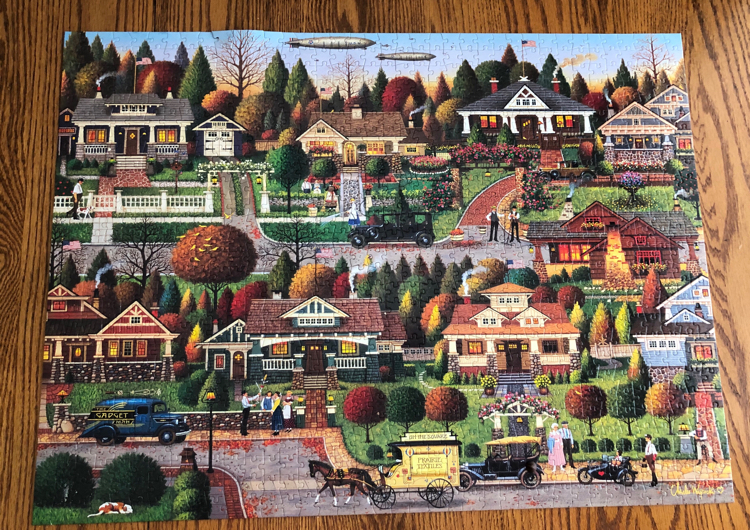
My kids love to complete jigsaw puzzles and save them. So I developed a method of gluing the puzzles together by carefully using a foam brush to neatly cover the front of the puzzle with Mod Podge. (If you don’t want any shine to your Mod Podge finish, pick the matte variety.)
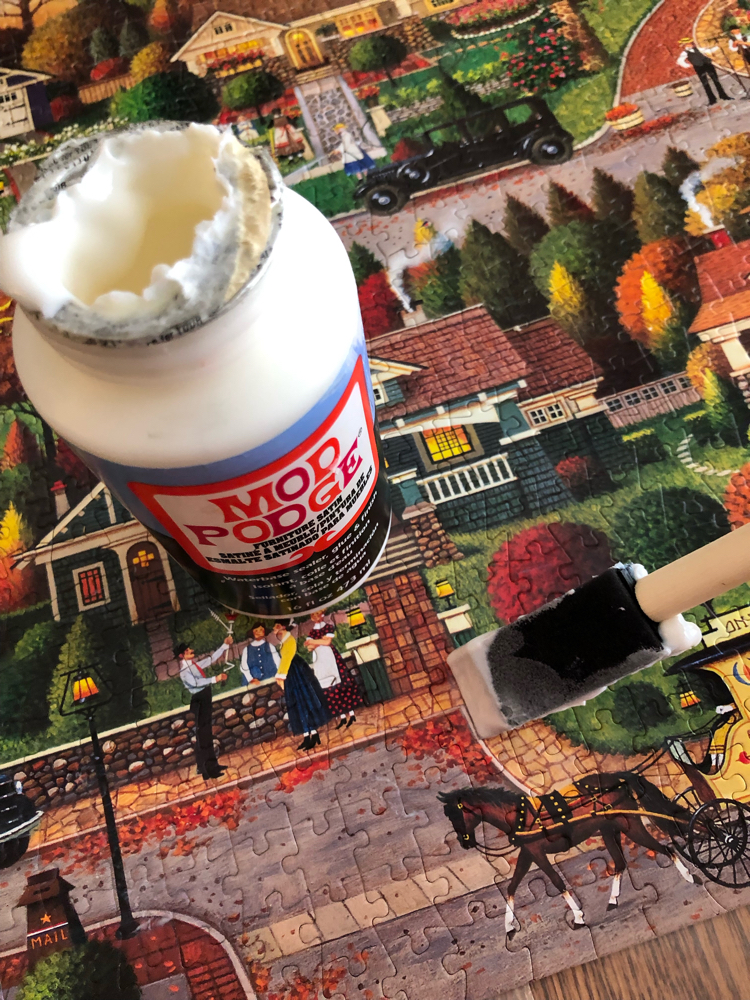
I then slip wax paper under the completed puzzle, and use that paper to carefully lift the puzzle up so I can slip a big piece of cardboard (usually a flattened box) underneath it. I then put another piece of cardboard on top, and carefully flip the puzzle over so I can also apply Mod Podge on the back of the puzzle too. I’ve found it also helpful to then cover the back of the puzzle with strips of either duct tape or painter’s tape to ensure the puzzle stays securely together.
Wooden Jigsaw Puzzle Board with Four Drawers
When my kids want to work on a jigsaw puzzle together (they like to complete 1,000-piece puzzles), I usually set up a big 4-foot folding table for them so they can work on it in the living room. They usually work on their puzzles during breaks from college, such as during a summer or winter break. The problem is that sometimes they don’t get the chance to complete it before returning to college.
That is exactly what happened with their last puzzle so the BIG table and unfinished puzzle sat in my home’s living room for several months! That is where this Wooden Jigsaw Puzzle Board with Four Drawers would come in handy. At 34 inches wide and over 26 inches in depth, it is large enough for many puzzles. It can be picked up and moved, and it has four drawers for holding and sorting puzzle pieces—I might need to get one of these before my kids work on another puzzle together! They are both graduating this spring, but they may want to start another puzzle next Christmas.
Jigsaw-Puzzle Tips
Before starting a puzzle, locate a surface in your home where it can remain undisturbed for a while. For us, we use a large folding table; just make sure that it’s length and width is big enough to hold your completed puzzle—compare the size of your table against the dimensions listed for the puzzle on its box. Alternatively, if a table isn’t large enough for your puzzle, you could use the Wooden Jigsaw Puzzle Board with Four Drawers that I described above.
It might also be helpful to use a felt puzzle mat to keep your pieces from slipping off the table—with a few of my kids’ puzzles, there have been a piece or two missing at the end since they completed the puzzle over a period of months; the pieces must have gotten knocked off the table and lost somehow! Such mats are designed so you can roll up a puzzle and safely store them until they can be completed, but some reviewers have noted that the pieces don’t stay together when the puzzle is rolled up and stored away. Starting your puzzle on a mat might make it easier to flip the puzzle over later to glue it, too. Or, you may want to start your puzzle on a big piece of cardboard so you don’t have to slide some under your puzzle once you have finished it.
Hanging Your Puzzle
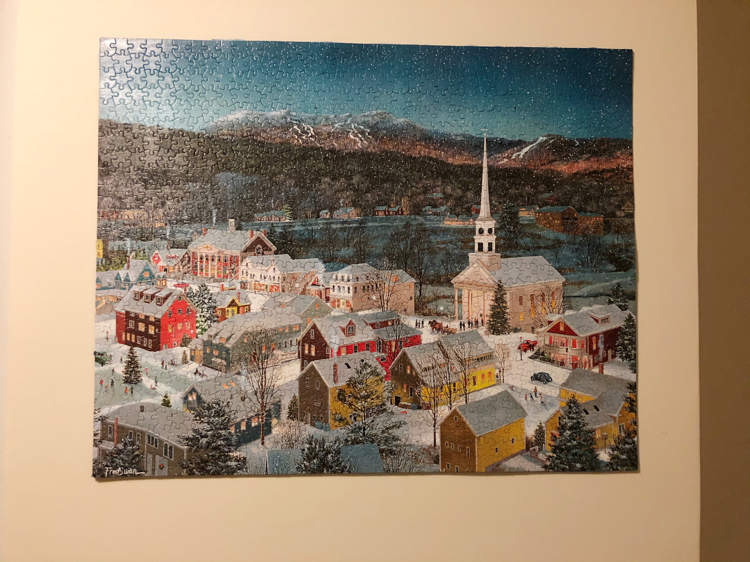
Most of the time when I hang one of my kids’ completed jigsaw puzzles, I simple add a few Command Picture Hanging Strips to the back (after the puzzle has been glued and taped) to adhere it to the wall.
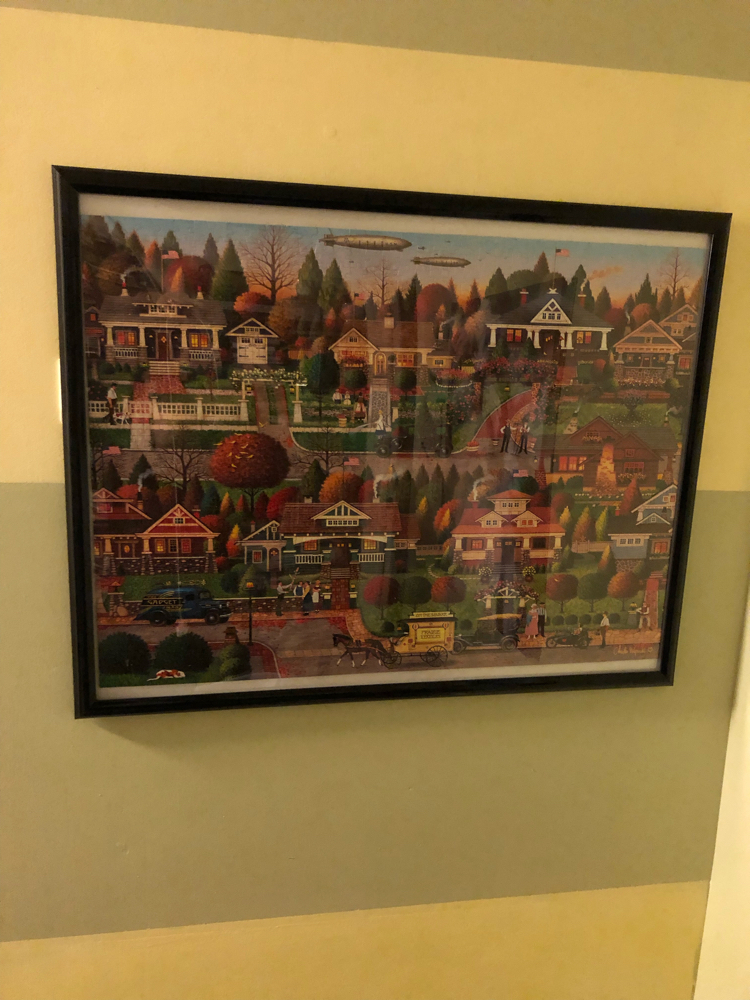
Alternatively, if you can find a large enough picture frame—such as a poster frame—you can carefully put your puzzle in a frame before hanging it. I have hung one of their puzzles that way. You could then use 3M Drywall Picture Hangers to hang the framed jigsaw puzzle. The hangers are so much easier to use than traditional picture hooks—you won’t need a nail or a hammer to hang your framed jigsaw puzzle. You just simply just push the hangers into the drywall. I have several framed pieces hanging in my home now with the 3M hangers, and they are quite sturdy!
Do you have any jigsaw-puzzle tips? I would love to hear them—please share them in the comments!
You Might Also Like
How to Hang and Save a Jigsaw Puzzle (With No Frame!)
How to Mod Podge and Frame a Jigsaw Puzzle
Discover more from momhomeguide.com
Subscribe to get the latest posts sent to your email.
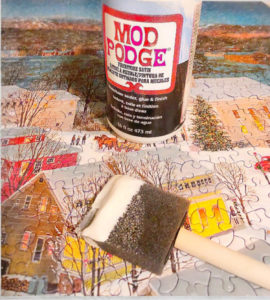
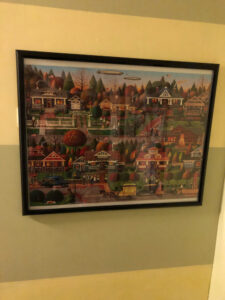
Leave a Reply